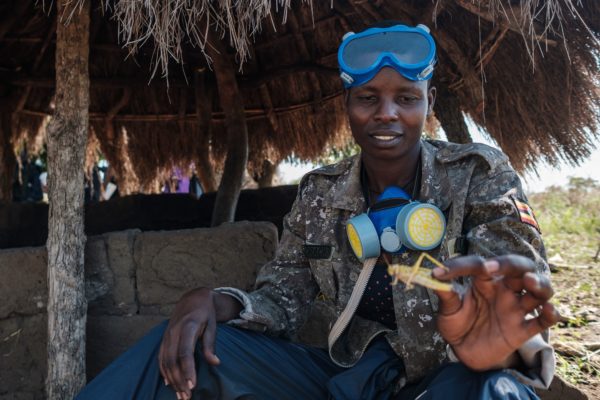Climate change made the Horn of Africa a breeding ground for massive swarms of destructive locusts.
East African nations face famines and economic ruin after inclement weather created the ideal breeding environment for the insects. Swarms including more than 192 billion insects have been spotted in Kenya, a nation experiencing its worst infestation in 70 years, reported NPR. The swarm was huge enough to cover an area three times the size of the city of New York. The bugs have also invaded Uganda, Ethiopia, Somalia, Sudan, Djibouti and several Middle Eastern countries.

The infestation started in 2019 with after a cyclone caused heavy rainfall in the “Empty Quarter,” a remote desert area in the Arabian Peninsula. The wet landscape was a perfect spot for desert locusts, also known as Schistocerca gregaria, to lay eggs. Normally, the locusts die off when the area becomes drier but two more cyclones allowed them to continue reproducing every three months.
University of Maryland biologist David Inouye told Inside Climate News global warming probably contributed to the wet conditions.
“I think that there is the potential for locust swarms to become more frequent, and potentially more widely distributed, as the environmental factors like rain and warm temperatures that favor their outbreaks continue to become more prevalent,” he said.
To make matters worse, a swarm containing between 4 and 8 billion insects can consume enough food to feed 3.5 million humans for a day, according to Nature.
Keith Cressman, senior locust forecasting officer for the United Nations’ Food and Agriculture Organization, called the locusts “voracious,” and warned they are very adaptable to different environments.
“It’s a pest that has been around for eons and eons of time,” Cressman told NPR. “It has so many different survival mechanisms … to just survive in some of the harshest areas and most remote parts of this planet. But it has this fabulous capacity to take advantage of good conditions.”
The locusts’ appetites have placed about 25 million people at risk for food insecurity, according to CNBC. Agriculture accounts for 65 percent employment and one-third of the gross domestic product in the region. The destruction of crops could be disastrous.
Cress believes spraying pesticides is the “only effective response,” to the plague. Some afflicted nations have started spraying, but combating the infestation is difficult in high-conflict areas.
“Swarms also develop when control efforts break down or political or natural disasters prevent access to breeding areas, and interventions do not start early enough,” Segenet Kelemu, director-general of the International Centre of Insect Physiology and Ecology in Nairobi, Kenya, told Nature. “Countries like Yemen, where there are human catastrophic situations due to conflict, are in no position to take care of invasive pests.”
The COVID-19 pandemic is another obstacle, Bloomberg reports. Shipping prices have increased due to a shortage of outgoing flights.
The FAO wants $153 million to get rid of the locusts. About $107 million has been pledged or donated.


